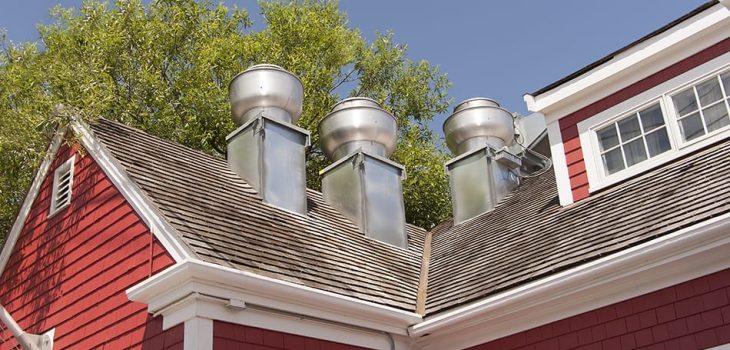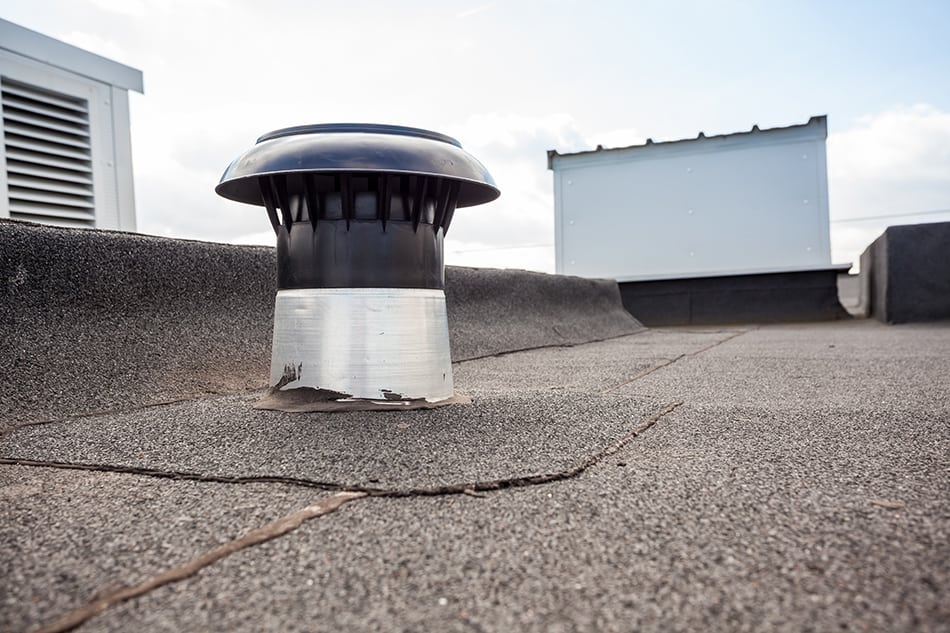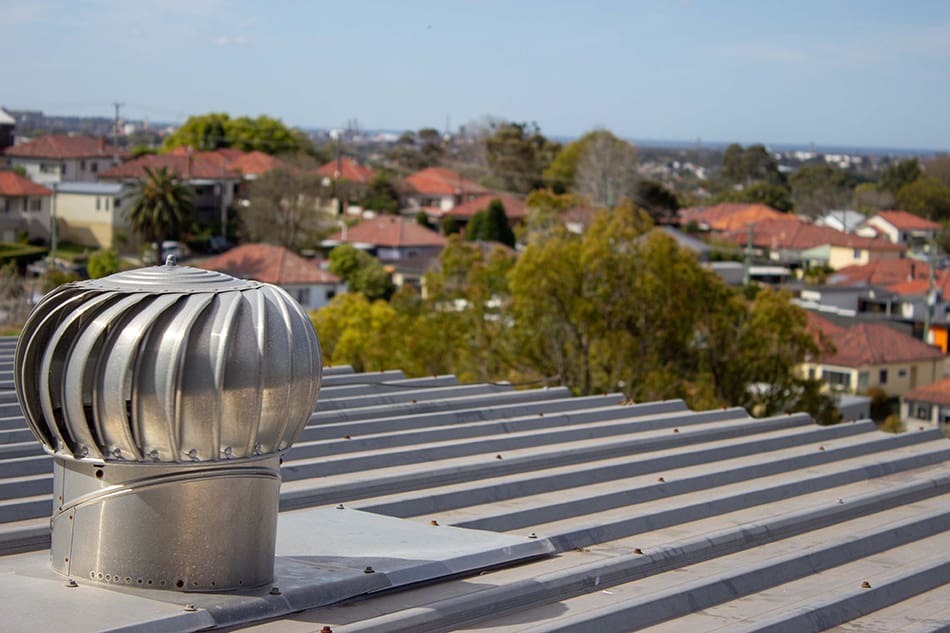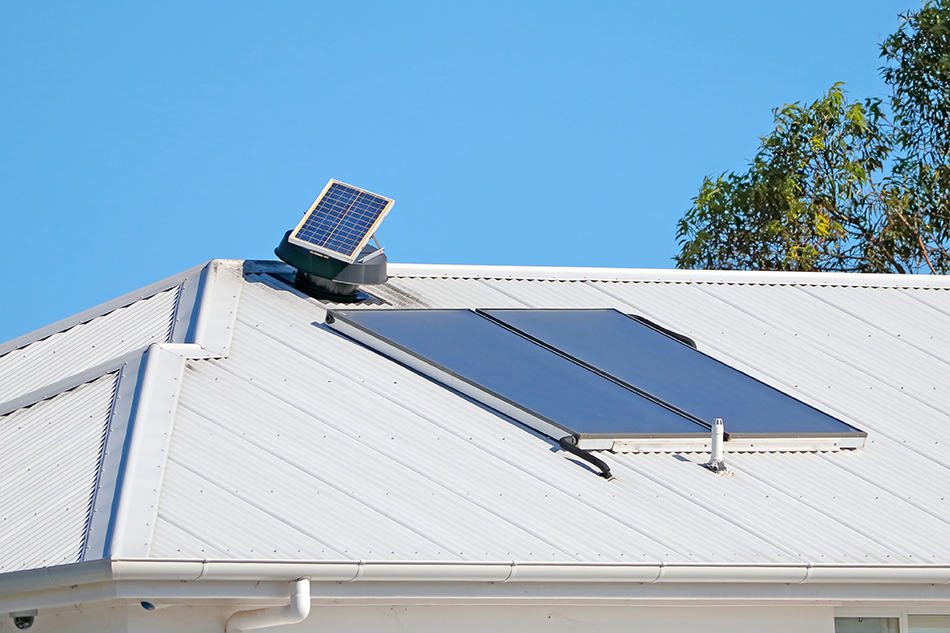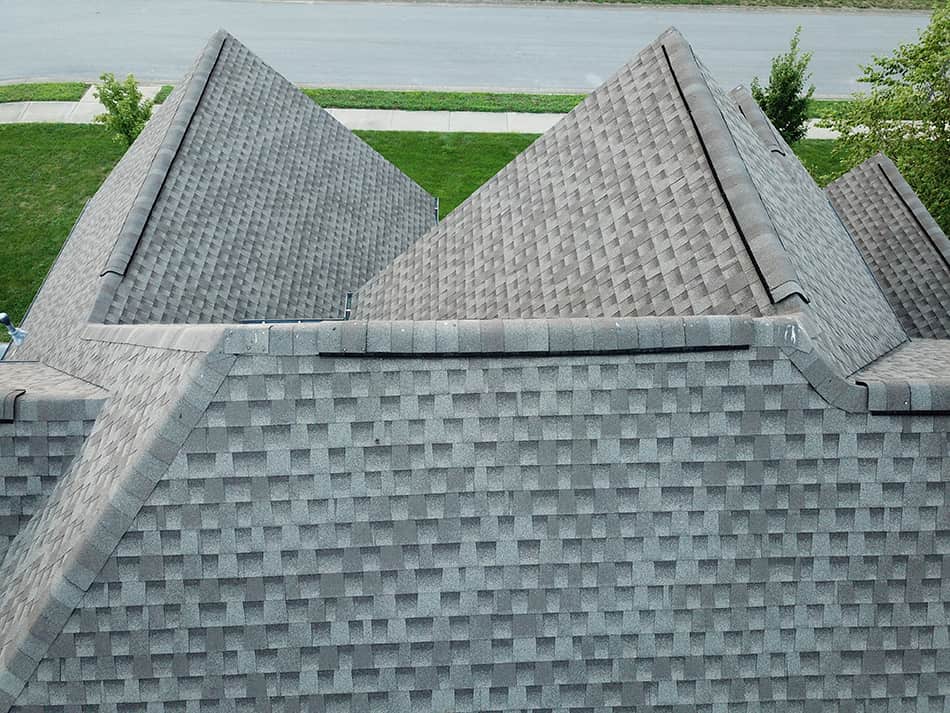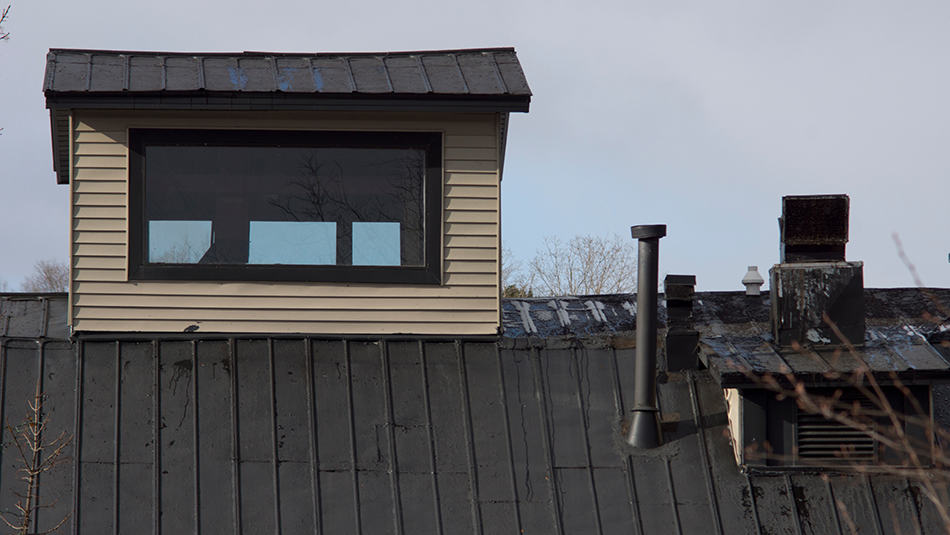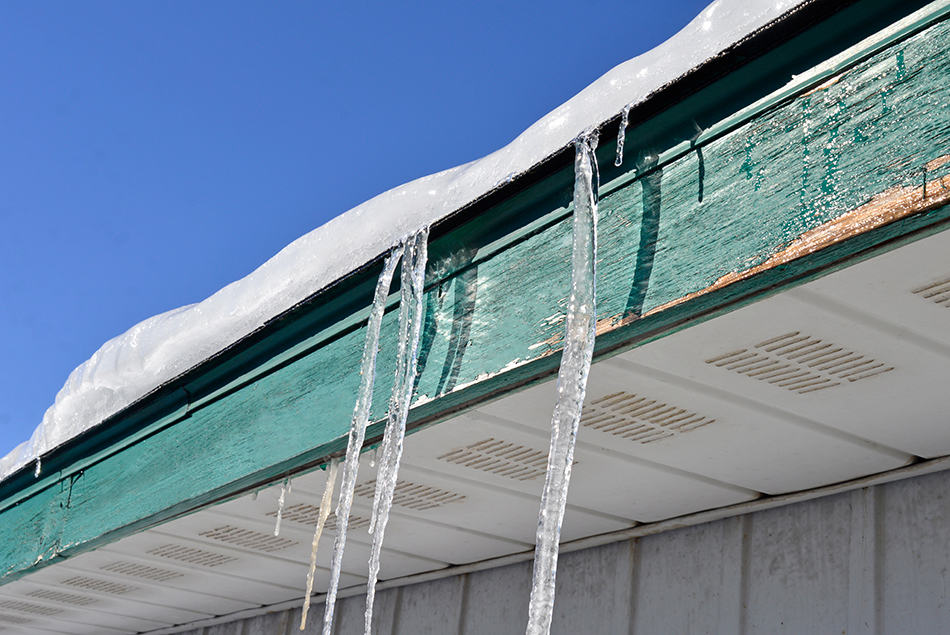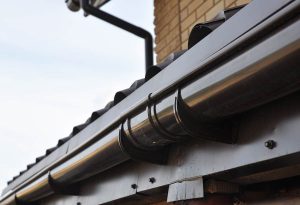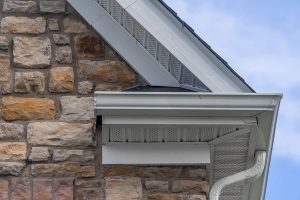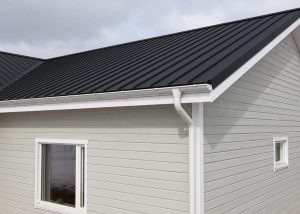Roof vents are a crucial part of every home as they provide adequate attic ventilation and prevent moisture buildup. Proper ventilation is an important aspect that many homeowners often overlook. As a rule of thumb, for every 150 square feet of attic space, 1 square foot of ventilation is required. Vents are normally placed on the roof close to the eaves as well as below it near the ridge.
In this article, know more about the importance of roof vents, how they work, and the 10 most common types to choose from for your home.
The Importance of Roof Vents
Extend your roof’s life: during winter, the edges of your roof and gutters may get ice damming, which is the buildup of icicles. These can damage the edge of the roof, but with adequate ventilation, you can avoid such problems in winters.
Reduce energy: in hot summer months, we all want to stay cool in our homes. If the heat doesn’t flow out of the house easily, the air conditioner will have to work harder to keep the indoor temperature cool. With a proper vent, you will reduce energy costs and keep the indoor temperature comfortable.
Protect the property’s overall health: proper roof ventilation is important for the property’s longevity and it protects the efficiency of the house.
Prevent condensation: during the colder months, household activities like dishwashing, laundry, and bathing can all cause condensation. But with good ventilation, you will avoid mold buildup in your home.
Minimize indoor temperature fluctuations: if your upstairs is always colder or warmer than downstairs, this is a sign of poor ventilation. People who live in ranch-style homes will notice that their living rooms are always colder than bedrooms. These temperature fluctuations can be rectified if the roof is adequately vented to allow warm air to escape and the cool air to enter into the attic. Not only will your home be a more comfortable environment to live in, but you will also save money on energy bills.
How does a Roof Vent System Work?
A roof vent system works by providing continuous airflow through the attic to remove moisture and warm air from the roof space. Roof ventilation systems minimize the impact of temperature fluctuations inside the home as they allow the air to flow through the intake and exhaust vents. There are many different types of vents that can be used in different locations of the attic for just the right amount of air circulation throughout the roof space.
When choosing the right ventilation system, you should take into account its design and function as it must allow plenty of air circulation under the roof and eaves. The right vent system will balance the incoming and outgoing ventilation by preventing the excess conditioned air from escaping through the vents, thus decreasing cooling and heating costs.
Attic Insulation and Ventilation
Aside from choosing the right ventilation system for your home, your attic must also be properly insulated in order to keep the energy costs down. Insulation and ventilation will work together to vent the unnecessary cooled and heated air and keep your home comfortable. But aside from attic insulation, the rest of your home must also be insulated for optimal results. A properly vented and insulated home will not be susceptible to moisture or excess summer heat plus you’ll save money on heating and cooling costs in the long run.
To help you choose the right ventilation system, take a look at the following list now:
10 Types of Roof Vents
1. Power Vents
Any electric fan that’s built into the attic’s gables is referred to as a powered ventilation system. There are some advantages and disadvantages with these vents. These systems are one of the most powerful vents that are most suitable for larger homes. They run on 300 watts of electricity, which is not exactly environmentally friendly. Having said that, most power vents come with a thermostat so once the temperature in the attic exceeds 100 degrees Fahrenheit, the system cuts out.
Another aspect of powered vents is their high noise level. Even if your attic space is insulated, you may still hear them whilst trying to sleep. Furthermore, powered vents are more difficult to install and require the expertise of an electrician. Their added weight is also another drawback that makes these systems more difficult to install. This type of ventilation is more prone to breakdowns because of the moving parts so regular inspections are necessary to ensure the system is working properly.
2. Hardwired Power Vents
Another type of power vent that’s most commonly used in larger homes is a hardwired system. This type of ventilation is installed by getting directly wired into the home and attached to a thermostat to operate the vent. Some designs allow manual switch operation rather than a thermostat.
This type of vent can be attached to a hole into the roof or it can be mounted to a gable. To maximize the efficiency and power of this vent, it’s best to pair it with an intake vent. It will then work optimally to move large amounts of air. The hardwiring system provides maximum power to the fan to pump out the hot air. But unlike other powered vents, the hardwired systems operate quietly and more efficiently.
The downside to hardwired vents is their reliance on electricity, which can increase your energy costs.
3. Whirlybird Vents
Whirlybird or roof turbine vents are made of lightweight aluminum that resembles mushrooms. Their fan blades are located on their sides. These protruding blades can either be placed in a protective casing to prevent the wind from blowing them out.
These vents don’t require electricity to work and are highly effective in allowing moist air to escape from the turbine. With a simple gust of wind through the turbine, large volumes of air are pulled up from the attic space. And since these vents don’t require any power to function and are light in weight, they are environmentally friendly. Most turbine vents don’t make any sound when their turbines are turning plus they are easy to install so any DIY enthusiast can install such vents on their roof.
4. Solar Power Vents
Solar-powered ventilation systems work a little differently to powered vents. Just as the name suggests, these vents are powered by the sun and consist of a solar panel mounted on the roof. The panels get charged by the sun’s rays. There are various solar panel styles to suit your home, and many are designed to be mounted not just to the roof, but also to the gables.
Solar panel vents are ideal for homes that get plenty of natural light throughout the year. However, if your roof is mostly shaded during the day, these vents will not be suitable. The fan of the solar panel moves the excess air out of the attic space, thus keeping it cool. However, solar panel vents aren’t as powerful in moving the air out as the electrically powered ventilation systems.
Although the sun’s rays are required to operate the solar panel vents, some modern systems have a battery backup in the event your roof doesn’t have adequate sun. The way they work is every time the sun goes down, the battery backup comes into effect. Most models come with thermostats and manual switch operation, but they can be quite expensive to install.
5. Off-ridge Vents
Off-ridge ventilation systems work the same way as box vents. These vents don’t have any moving parts and are slightly different in shape than box vents. Unlike box vents that are bulkier in appearance, the off-ridge vent is longer in length and thinner. The part that regulates the airflow is usually located on the section next to the vent’s ridge. This system works optimally with an exhaust system to extract the excess air out of the attic space.
The downside to off-ridge vents is their lower efficiency as they are installed in narrower areas of the roof so you may need an additional vent system.
6. Ridge Vents
Ridge vents are typically installed on the ridge or peak of the roof and covered by the roof shingles to conceal them. Similar to off-ridge vents, there are no moving parts in ridge vents but they must be paired with soffit vents in order to work. The ridge ventilation system doesn’t create cold or warm air in the roof and is considered to be one of the most effective systems that prevent roof aging.
Keep in mind that installing a ridge vent is not a DIY job as they are very difficult to install and the vents are expensive. Only the most experienced contractors can take on this project as they need to run the vent along the roof. One of the most important factors to consider when installing this vent system is that the exhaust hole needs to be the same size as the intake holes in order for the ventilation system to function correctly. Such difficulty may deter some homeowners from choosing ridge vents, even though they are one of the most efficient ventilation options.
7. Box Vents
Also known as low-profile vents, the box ventilation systems feature static openings that must be placed evenly at an angle and as close to the roof’s ridge as possible for maximum efficiency. Some box vents are rounded while others are square, hence they offer limited aesthetic options. These vents sit higher than ridge vents, thus making them more visible and easier to spot. This visibility can make box vents an unappealing option.
Box vents are very simple to install, especially in homes that already have a static ventilation system. In addition, they are less expensive to install than ridge vents.
While it is easy to install a box vent, you must take into account how you will make it waterproof. A metal hood should prevent the rain from entering the vent. Regular inspection of these vents is required to ensure proper function.
8. Cupola Vents
Cupola vents are stylish and easy to identify thanks to their charming designs that originate in New England in the 1800s. Cupola is an Italian word that literally means a small upside-down cup. These vents were used to ventilate the ranch owners’ barns, in which the cattle were kept. The moisture from the cattle’s manure results in the deterioration of the wooden barn, hence the reason cupola vents were created.
The ventilation problem of barns was solved by using cupolas, but soon after, they were also used as architectural features. These vents are highly efficient and don’t require the help of air-cons to keep the interiors cool. They also make a charming addition to any home.
9. Soffit Vents
As I previously mentioned, soffit vents are best paired with ridge vents or in conjunction with existing intake ventilation for maximum efficiency. These vents are installed into the roof and generally made of aluminum or PVC. Soffit vents aren’t easily visible when you look up the roof. They are discreetly installed facing downward into the eaves of the roof, thus making them difficult to spot. The downward orientation of soffit vents makes them more effective in allowing air to flow while preventing moisture buildup inside the attic space. The vents can be installed in rectangular or square panels for maximum versatility.
10. Gable Intake Vents
Gable intake ventilation systems work exactly the opposite way to soffit vents. They are placed at the top of the roof’s gable and allow air to flow in and out of the attic in a much similar way as ridge vents. This makes them an ideal choice for homes that don’t have an existing intake vent. Having said that, the gable intake vents tend to be less popular than other models because of their unattractive appearance. The top end of the vent is always covered with a metal mesh to prevent insects from entering.
Overall, gable intake ventilation systems only provide partial coverage and are somewhat inefficient. But to enhance their performance, you can always use a multi-gable vent system instead.
